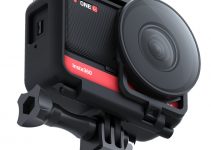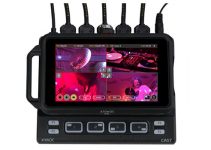Storage is a problem we all have that is hard to fix. It either requires a lot of time or money and if you skimp on either you end up with a massive pile of hard drives with varying degrees of organization. Filmmakers have it even worse cause video files add up quick, and then you have to figure out how to store hundreds of terabytes of footage without spending absurd amounts of money.
YouTubers such as Gene Nagata, known better as Potato Jet, with multi-camera setups run into this issue quite quickly. And sure, you could spend $35,000 on a Jellyfish by LumaForge but most people don’t want to do that. Nagata doesn’t want to, and he has more footage than would even fit on that configuration. Here are some tips on an alternative.
Nagata points out there are four main things he focuses on with storage. Safety, meaning that your data is backed up and protected from accidents. Affordability, because it helps to save money. He also wants it to be fast and simple. Admittedly, he says that you can’t have all four, so you have to find out where to compromise.
One thing to mention is that even if you find an affordable system to hold all your footage it will mean nothing without a proper organization structure. Let’s take a look at Nagata’s external hard drive collection and how he stores his massive quantities of footage.
The simplest thing for organization is sorting between his Active projects sorted on SSDs, Closed projects which are recently finished on portable HDDs, and then Archived projects on larger external HDDs.
This is essentially moving from smaller, faster drives to slower, larger drives as the project is completed. It makes a lot of sense because SSDs are pricier but their extra speed is necessary for archiving while large HDDs are much cheaper but unsuitable for actually working from.
Nagata also emphasizes that he uses different systems depending on the project. A personal shoot he might just work on his MacBook Pro’s internal drive and then archive when finished, while a paid shoot might require multiple drives to make rapid backups on location when logging the footage.
His example of a serious shoot is that he used three drives for proper backup. One he kept, one the producer kept, and one that got shipped to the agency. Keeping the footage separate is critical to proper backup as it prevents all the copies from getting wiped out in the same incident.
You will absolutely have to keep things sorted on a spreadsheet or other filing system so you can reference and find the projects if you need to.
Naming and labeling the actual drives is a start. You can also do things like save everything from one client to one archive and other types of project to another so you can easily find stuff without always referring to a master sheet.
A final note is the always make copies from the original memory card, not from the first hard drive. Corruption can be introduced on the first copy and then you would be backing up that error on the additional drives.
There is a lot more good information in the video. What are your storage tips?
[source: Potato Jet]
Order Links:
- SanDisk Extreme Pro Portable SSD (B&H, Amazon)
- WD My Passport USB 3.2 Gen 1 External HDD (B&H, Amazon)
- WD Elements Desktop USB 3.0 External HDD (B&H, Amazon)
- Samsung T5 Portable SSD (B&H, Amazon)
Disclaimer: As an Amazon Associate partner and participant in B&H and Adorama Affiliate programmes, we earn a small comission from each purchase made through the affiliate links listed above at no additional cost to you.
Claim your copy of DAVINCI RESOLVE - SIMPLIFIED COURSE. Get Instant Access!




